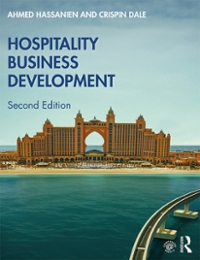Question
Please JUSTIFY or Agree/Disagree with the writer or Answer the Following in half page (SHORT NOTE). And please do mention if you are Justifying,Agreeing,Disagreeing or
Please JUSTIFY or Agree/Disagree with the writer or Answer the Following in half page (SHORT NOTE). And please do mention if you are Justifying,Agreeing,Disagreeing or Answering the Following. Thanks
The note should have intext citations. For example, anything with numbers or quotes per paragraph. The intent citation just needs to be the Author's last name and year it was published. Please also include REFERENCES. Thanks
xxxxxxxxxxxxxxxxxxxxxxxxxxxxxxxxxxxxxxxxxxxxxxxxxxxxxxxxxxxxxxxxxxxxxxxxxxxxxx
Error measures are used to determine how well a particular forecasting method is able to reproduce the data that is already available. If you select the most accurate method for the data already available, you have to potential to obtain more accurate forecasts for the future (Anderson et al., 2016). Moving averages, weighted moving averages, and exponential smoothing are all smoothing methods that are easy to use and provide a high level of accuracy for short-range forecasts (Anderson et al., 2016). Each method when modified appropriately will adjust for errors and smooth out random fluctuations in the time series.
The three measures of forecast accuracy are mean absolute error (MAE), mean squared error (MSE), and mean absolute percentage error (MAPE) (Anderson et al., 2016). Each measure is used to determine how well each forecasting method can reproduce the available time series data. The most accurate method for the know data will potentially increase the accuracy of forecasts for future time periods.
Therefore, the moving averages method uses the average of the most recent data in the time series to forecast the next period (Anderson et al., 2016). Each time new data becomes available it replaces the previous data to ensure the newest data sets are always used. Smaller values will allow you to track shifts quickly and larger values will be more effective in smoothing out random fluctuations.
Lastly, weighted moving averages involve selecting a different weight for each data value in the moving average and then computing a weighted average of the most recent data (Anderson et al., 2016). When using weighted moving averages, most observation receives the largest weight and it decreases with the age of the data.
References
Anderson, D. R., Sweeney, D. J., Williams, T. A., Camm, J. D., Cochran, J. L., Fry, M. J., & Ohlmann, J.W. (2016). Quantitative methods for business with CengageNOW (13th ed.). Boston, MA: Cengage Learning. ISBN-13: 9781305799257
Step by Step Solution
There are 3 Steps involved in it
Step: 1

Get Instant Access to Expert-Tailored Solutions
See step-by-step solutions with expert insights and AI powered tools for academic success
Step: 2

Step: 3

Ace Your Homework with AI
Get the answers you need in no time with our AI-driven, step-by-step assistance
Get Started


